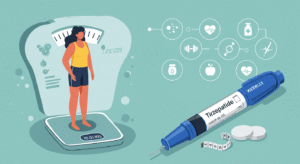Hormonal cycles play a pivotal role in athletes’ performance, influencing energy levels, strength, endurance, and recovery. Understanding these cycles and incorporating them into training plans through periodization can optimize athletic performance and reduce the risk of injuries.
For female athletes, the menstrual cycle significantly impacts physical performance and training outcomes. The menstrual cycle consists of three main phases: the follicular phase, ovulation, and the luteal phase. During the follicular phase, which begins on the first day of menstruation and lasts until ovulation, estrogen levels gradually increase. Higher estrogen levels can enhance muscle recovery, reduce inflammation, and improve overall endurance. This phase is often considered an optimal time for high-intensity training and building strength.
Ovulation occurs around the midpoint of the menstrual cycle and is characterized by a surge in luteinizing hormone (LH) and estrogen. This period is often associated with peak strength and power, making it an ideal time for competitions and maximal effort workouts. Some women may also experience increased motivation and energy levels during ovulation.
The luteal phase follows ovulation and is marked by higher levels of progesterone and relatively lower levels of estrogen. Progesterone can have a catabolic effect on muscle tissue, leading to increased fatigue and reduced performance. Additionally, some women may experience premenstrual syndrome (PMS) symptoms such as bloating, mood swings, and decreased coordination. During this phase, it may be beneficial to focus on lower-intensity workouts, active recovery, and skill-based training.
Periodization, a systematic approach to training that involves cycles of varying intensity and volume, can be tailored to accommodate these hormonal changes. By aligning training schedules with the menstrual cycle, female athletes can optimize their performance, enhance recovery, and reduce the risk of overtraining and injuries.
In male athletes, testosterone levels play a crucial role in muscle mass, strength, and overall performance. Testosterone follows a diurnal cycle, with levels peaking in the morning and gradually declining throughout the day. High testosterone levels are associated with increased protein synthesis, muscle growth, and faster recovery times. Incorporating strength training and high-intensity workouts during periods of peak testosterone levels can help maximize performance gains.
Periodization for male athletes often involves cycles of high-intensity training followed by periods of lower intensity to allow for recovery and adaptation. This approach helps prevent overtraining, which can lead to hormonal imbalances, fatigue, and decreased performance.
Both male and female athletes can benefit from monitoring their hormonal levels and adjusting their training programs accordingly. Tools such as hormone testing, wearable fitness trackers, and menstrual cycle tracking apps can provide valuable insights into hormonal fluctuations and their impact on performance.
Nutrition also plays a vital role in supporting hormonal balance and athletic performance. A well-balanced diet rich in protein, healthy fats, and complex carbohydrates can help stabilize hormone levels and provide the necessary energy for training and recovery. Additionally, ensuring adequate sleep, managing stress, and staying hydrated are essential components of a holistic approach to athletic performance.
In conclusion, understanding and incorporating hormonal cycles into training plans through periodization can optimize athletic performance and reduce the risk of injuries. By aligning training schedules with hormonal fluctuations, athletes can maximize their potential and achieve their performance goals. Regular monitoring, personalized training programs, and a balanced lifestyle are key to harnessing the power of hormones in athletic performance.


